Best SMTP Email Services and Providers for 2022
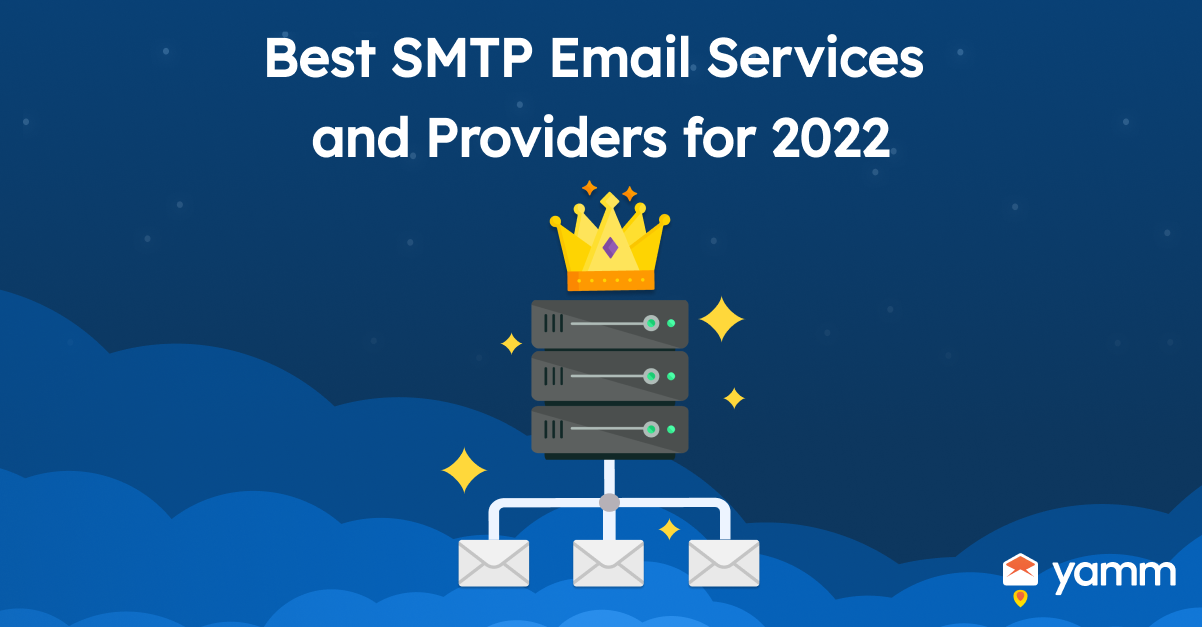
Listed below are the best SMTP email services and providers for 2022.
- Postmark: Postmark is a reliable and secure SMTP email service provider that works well for businesses that use transactional emails. Its high deliverability rates, advanced analytics, and strong security features make it a popular choice for companies that need to guarantee email delivery and tracking. However, its higher price and lack of marketing features are a problem for businesses that need more email marketing tools.
- Sendgrid: SendGrid is a powerful SMTP email service provider that offers a variety of advanced features and integrations for businesses that require both transactional and marketing email capabilities. It is a popular choice for companies that require high-quality email communication because it focuses on deliverability, analytics, and automation. However, some users do not like that it has limited customer service and high prices.
- Mailgun: Mailgun is a powerful SMTP email service provider that offers a wide range of advanced features and integrations for businesses that need email automation, tracking, and deliverability features. It is a popular choice for companies that require high-quality email communication because it focuses on deliverability, automation, and analytics. However, its limited design and customization options for emails, higher prices, and limited free plan must be a problem for some users.
- Amazon SES: Amazon SES is a powerful SMTP email service that gives businesses a way to deliver emails that is both cost-effective and scalable. It is a popular choice for companies that require a reliable email delivery service because it focuses on deliverability, scalability, and flexibility. However, its lack of phone support, technical complexity, and limited email marketing features are a concern for some users.
- MailChimp: MailChimp is a popular all-in-one marketing platform that gives businesses a variety of tools for email marketing, automation, and customer relationship management (CRM). It is a popular choice for small and medium-sized businesses because it is easy to use, has advanced email marketing features, and has strong analytics. However, its higher prices, limited transactional email features, and limited customization options is a problem for some users.
- SendLayer: SendLayer is a cloud-based email delivery platform that helps businesses send emails in a way that is reliable, scalable, and affordable. It has an easy-to-use SMTP API, and users add it to their existing apps or use the platform's web-based user interface to send emails.
- Google Workspace: Google Workspace is a popular choice for businesses that already use other Google productivity tools and want to streamline their workflows. It is a good choice for businesses of all sizes because it reliably sends emails, has advanced features, and has strong security. However, its small storage space and few ways to customize are not enough for some users.
Simple Mail Transfer Protocol (SMTP) email services are online platforms that allow businesses and individuals to send and receive emails over the Internet. Users send emails from their own domain name using a custom email address. Additionally, these services offer advanced features like email analytics, automation, and integration with other software.
SMTP email services work by relaying emails between the email client or platform of the sender and the email server of the recipient. The SMTP service acts as a go-between, sending the email message from the sender to the email server of the recipient. The message is sent to the recipient's inbox.
Users usually need to sign up for an account and set up their email client or platform to use the SMTP server provided by the service. It needs to set up its email domain and address to use an SMTP email service. Users are able to use it to send and receive emails, manage email campaigns, track how well the emails are doing, and connect the email to other software.
It is important to think about things like deliverability, security, scalability, cost, and features like the ability to automate and integrate when choosing an SMTP email service. Selecting the best SMTP relay for the business helps people improve email communication and reach their marketing and communication goals.
1. Postmark
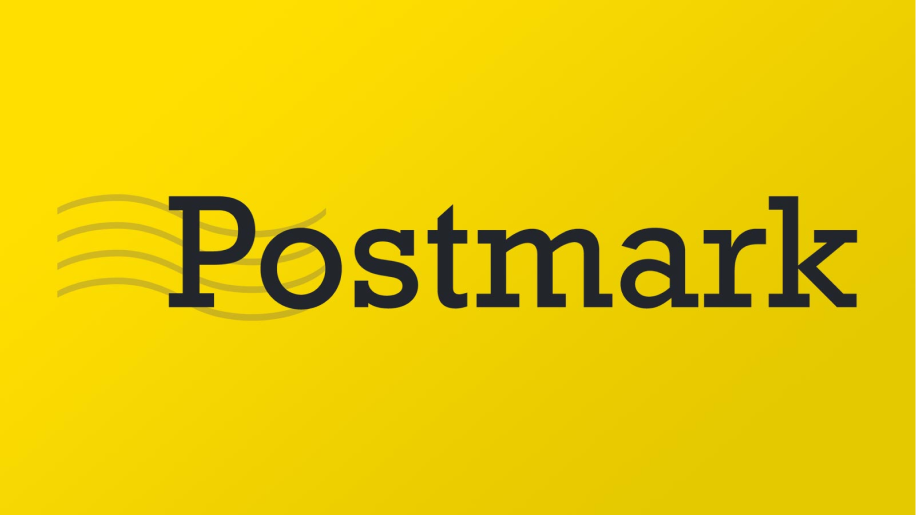
Postmark is an SMTP email service that focuses on sending transactional emails to businesses. It is made to help businesses send significant emails, such as account activations, password resets, purchase receipts, and other significant messages.
On the other hand, Postmark has a high email deliverability rate, with a focus on inbox placement. The tool is known for its advanced email analytics and reporting features to track email performance and engagement. It has easy integration with popular software platforms and programming languages, including APIs, SMTP, and webhooks. The provider is a great choice because of its strong security features. These features include TLS encryption, two-factor authentication, and IP address whitelisting. The company is acknowledged to have excellent customer support and resources, including a comprehensive knowledge base and live chat support.
However, one of the disadvantages of Post is having a limited feature for email marketing, such as automation and segmentation capabilities. Moreover, it has a higher cost compared to other SMTP email services, with pricing based on the number of emails sent per month. Additionally, the tool has limited third-party integration compared to other SMTP email services.
2. Sendgrid

SendGrid is an SMTP email service that lets businesses send transactional and marketing emails and keep track of them. It has a variety of features and integrations that let companies create and manage email campaigns, automate email workflows, and measure how well emails work.
On the other hand, deliverability rates are one of the best things about SendGrid. The platform has a good reputation for delivering emails reliably and getting around spam filters. It makes it a great choice for businesses that use email to communicate with customers in important ways. SendGrid gives users powerful reporting and analytics tools that let them keep track of email delivery rates, open and click-through rates, and other essential metrics.
The price is another benefit of SendGrid. The platform has different pricing options, including one that is free and lets businesses send up to 100 emails per day. SendGrid has great customer service, with a detailed knowledge base and helpful email and phone support.
However, one of the disadvantages of SendGrid is that it allows editing emails. The platform's email editor is a bit limited when compared to other email delivery services. It makes it harder to make visually appealing emails. Some users have reported problems with email delivery and delays, especially during times with a lot of traffic. Lastly, the platform has great analytics and reporting tools, but some users have said that the interface for reporting is a little hard to use.
3. Mailgun

Mailgun is an SMTP email service provider that helps businesses automate, track, and make sure their emails get to the right place. It is made to help companies send and manage a lot of emails, such as transactional emails, marketing emails, and newsletters.
On the other hand, Mailgun's high deliverability rates, powerful APIs, easy-to-use email builder, and full email analytics are all good reasons to use it. Mailgun also has a flexible pricing system that lets users choose the plan that works best for them.
However, there are some things to think about if users want to use Mailgun. The service has had occasional outages, which makes it hard to send emails in the past. Additionally, compared to other email service providers, some users find the documentation and support resources to be less complete. Lastly, compared to other email service providers, the email templates are not as easy to change for some users.
4. Amazon SES
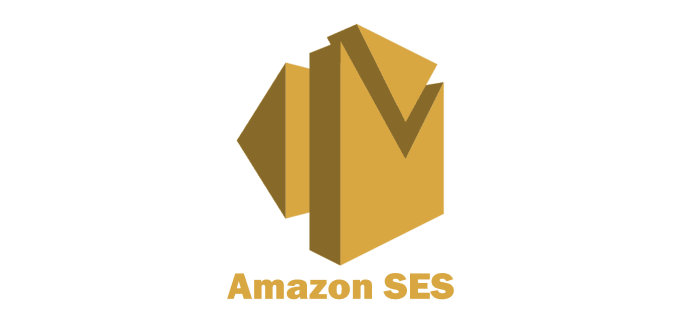
Amazon SES (Simple Email Service) is an SMTP email service that gives businesses a scalable and affordable way to send and receive emails. It is a cloud-based email-sending service that makes it easy to send, receive, and scale emails.
On the other hand, Amazon SES is very flexible and sends thousands of emails per second. It is easy to grow or shrink based on what the business needs. Amazon SES is a good choice for businesses that need to send a lot of emails without spending a lot of money. It has a pay-as-you-go model and charges a small fee per email. It means that businesses only pay for its use. Amazon SES is a reliable email service with a high rate of deliverability and a strong infrastructure for email. It uses authentication protocols that are standard in the industry and has a team of experts who watch email delivery around the clock. Additionally, Amazon SES has a lot of features and ways to customize it, such as email templates, tracking for emails, and custom sending domains. Moreover, it works with services like S3 and Lambda from AWS. The provider offers a secure email infrastructure with advanced encryption and security features to protect sensitive information and stop spam.
However, Amazon SES is made for developers and businesses that know a lot about technology. It needs to know about email protocols and how to code to set it up and configure it. Amazon SES does not offer direct customer service, users must rely on documentation and forums to find answers to their questions. Amazon SES charges for each email it sends. Prices vary based on the number of emails sent, the type of email sent, and where the email is going.
5. MailChimp
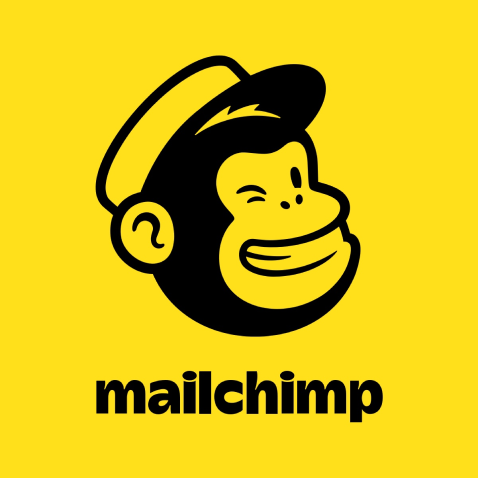
MailChimp is a marketing platform that gives businesses tools for email marketing, automation, and customer relationship management (CRM). It has an SMTP email service that lets businesses send email campaigns, newsletters, and transactional emails and keep track of them.
One of the best things about Mailchimp is how easy it is to use. It comes with pre-made email templates and a drag-and-drop editor, which makes it easy for users to make and send emails that look professional. Mailchimp has powerful reporting and analytics tools that let businesses track how well their email campaigns are doing and make decisions based on the data.
Mailchimp's automated workflows are another feature that stands out. It lets users make their own automated email campaigns, like welcome emails, reminders for carts that have been left behind, and follow-ups after a purchase. The platform works well with other business tools like Shopify, Salesforce, and Google Analytics, businesses of all sizes choose it.
However, Mailchimp's prices of its services could be bad for some users. Its free plan only has a few features and only handle 2,000 users. Its pricing plans get more expensive as the number of users and features they want goes up. There are some users that have said that Mailchimp's customer service is hard to work with and that the platform's email automation features aren't very flexible.
6. SendLayer

SendLayer is a powerful and easy-to-use transactional email service. Users are able to connect to the website and send emails from it with the SMTP relay and email API. The feature gives users the best deliverability, reliability, and scalability.
The best thing about SendLayer is that it grows as needed. The platform is made to handle a lot of email traffic, which makes it a great choice for businesses that regularly send a lot of emails. It gives users detailed analytics and reporting, which lets them track email delivery rates and other metrics and change their email marketing strategies accordingly.
Moreover, SendLayer is affordable, which is a plus. The platform's pricing plans are competitive when compared to other email delivery services. It has a pay-as-you-go pricing model that lets businesses pay only for the emails sent. Additionally, SendLayer offers great customer support and resources, such as a knowledge base, documentation for the API, and email support.
However. SendLayer is not the best choice for businesses that require a lot of options for branding and customization. There are some users have said that their emails sometimes do not get through, especially with spam filters. Lastly, SendLayer has an easy-to-use interface, but it does not have a lot of advanced features or customization options, which is a problem for some users.
7. Google Workspace
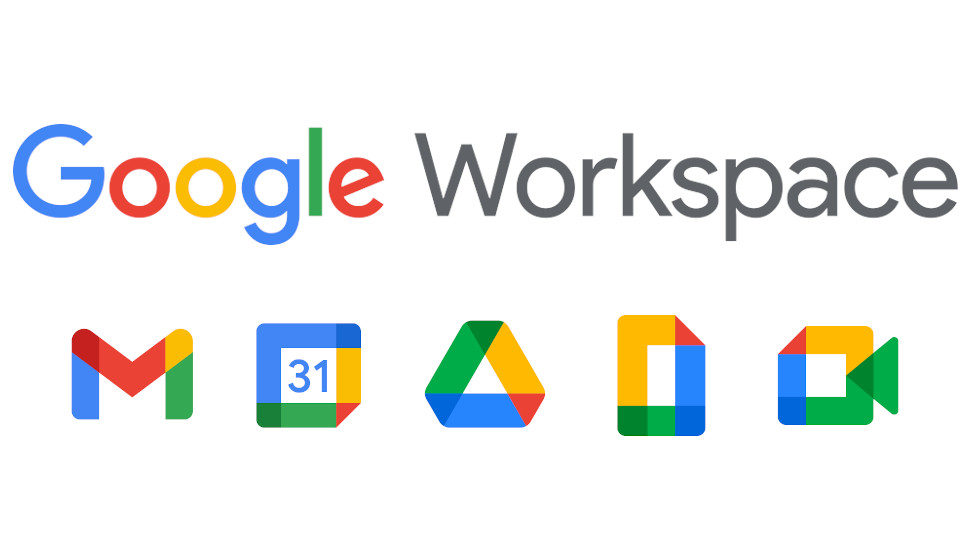
Google Workspace, which used to be called G Suite, is a set of cloud-based tools for working together and getting work done. The tool has a set of tools for getting work done in the office, and it also has an SMTP email service that lets businesses send and receive emails using their own domain name.
One of the best things about Google Workspace is that it works well with other Google services like Google Drive, Google Calendar, and Google Meet. It gives users a single place to talk to each other and work together. It also has strong security features, like two-factor authentication and data encryption, that keep users' data safe and private.
Additionally, Google Workspace is cheap, which is another benefit. Its pricing plans are comparable to those of other productivity suites and change depending on the number of users and the features they need. Moreover, it has an easy-to-use interface that makes it easy to move around and use.
However, Google Workspace is not the best choice for businesses that require a lot of options for branding and customization. It does have some branding options, but are not as many as on other platforms. There are some users who have said that are having trouble with customer service, especially when they had technical problems that required live help. Lastly, Google Workspace has a good set of tools for getting work done. Users find that the platform's file storage and sharing features aren't as good as those of other solutions.
How to Choose Best SMTP Email Service
Listed below are the steps on how to choose the best SMTP email service.
- Select an SMTP service that has a high uptime and a track record of delivering emails reliably.
- Look for an SMTP service with a good reputation among email providers and a high deliverability rate to make sure your emails get to the right people.
- Think about getting an SMTP service that is able to handle the number of emails that users send now and grow with the business.
- Look for an SMTP service that provides secure authentication and encryption to keep people from reading or changing the emails.
- Choose an SMTP service with flexible and scalable pricing plans that fits the budget.
- Find an SMTP service that works with the email software or marketing automation platform that users already use.
- Choose an SMTP service that offers responsive and helpful support to help users troubleshoot issues and get the most out of their service.
Best SMTP Email Services for Gmail
Users must have a few choices if users want to use an SMTP email service with a Gmail account. Sendinblue is a great choice if the user needs an email marketing platform that additionally has an SMTP service. It has both free and paid plans., Users are able to send up to 300 emails per day with the free plan. On the other hand, use the Gmail SMTP server to send emails from the Gmail account. It is a free option that is easy to set up in Gmail's settings.
SendGrid and Mailgun are popular choices for businesses that want to send emails with a high rate of success and flexible pricing plans. Moreover, SendGrid has both free and paid plans. Users are able to send up to 100 emails per day with the free plan. Additionally, Mailgun has both free and paid plans as well. Send up to 5,000 emails per month with the free plan.
Furthermore, Amazon SES is a reliable and cost-effective SMTP email service that works well with Gmail. It is best for businesses with a variable number of emails. It has pay-as-you-go pricing, which makes it perfect for businesses that need to be able to change how many emails they send.
Best SMTP Email Services for Outlook
There are a few different options for SMTP email services for Outlook. One of the easiest options is to use Outlook's own SMTP server, which sets up easily in the account settings and is available to all Outlook users.
Moreover, it is recommended for users to use a third-party SMTP email service like SMTP2GO or Sendinblue. These services give Outlook users a safe and reliable way to send emails. These providers have a high rate of being delivered and advanced features like email analytics and reporting.
People who use Outlook often choose SMTP2GO. It has both free and paid plans. Users are able to send up to 100 emails per day with the free plan. SMTP2GO has advanced features like real-time analytics, spam filtering, and email tracking. Additionally, it has a high deliverability rate.
Another great SMTP email service for Outlook that users are able to use is Sendinblue. It is an SMTP service that is part of an email marketing platform. Sendinblue has both free and paid plans. Send up to 300 emails per day with the free plan. Sendinblue has more advanced features like A/B testing, segmentation, and personalization.
Think about things like deliverability rates, scalability, security, integration, and cost when selecting an SMTP email service for Outlook. Additionally, check to see if the service selects works with Outlook and if there are any rules about how it is used. Overall, SMTP2GO and Sendinblue are both good options to think about if a user wants to send emails from Outlook.
Best SMTP Email Services for Azure
SendGrid is one of the best SMTP email service providers for Azure. A popular SMTP email service that works well with Azure is SendGrid. It has high deliverability rates and pricing plans that are able to change. SendGrid has both free and paid plans. Send up to 100 emails per day with the free plan.
Azure is able to work with Amazon SES, which is a reliable SMTP email service. It has pay-as-you-go pricing, which makes it perfect for businesses that send and receive different amounts of emails. Amazon SES has a high rate of being delivered and works well with Azure.
Azure is able to work with Mailjet as well, which is a popular SMTP email service. It has both free and paid plans. Send up to 6,000 emails per month with the free plan. Mailjet has high deliverability rates and a lot of advanced features for email marketing.
SparkPost is another good SMTP email service that is able to be used with Azure. It has both free and paid plans. Users are allowed to send up to 100 emails per day with the free plan. SparkPost has a high rate of emails being sent and received, and it has advanced email analytics and reporting tools.
Best SMTP Email Services for Yahoo
There are different SMTP email services for Yahoo to choose from. Using Yahoo's own SMTP server is one of the easiest options. Yahoo has its own SMTP server, which Yahoo Mail users are able to use to send emails. However, the service is only for people who pay a monthly fee for Yahoo Mail Plus and get extra features.
Using an external SMTP email service like Sendinblue, SMTP2GO, or SendGrid is another option. These services give Yahoo Mail users a safe and reliable way to send emails. It has a high rate of being delivered and advanced features like email analytics and reporting.
Best SMTP Email Services for Hotmail
There are different options of SMTP email services for Hotmail to select from. One of the good options is to use an external SMTP email service, such as SMTP2GO, Sendinblue, or Mailjet. These services provide a reliable and secure way to send emails from Hotmail. The provider offers high deliverability rates and advanced features, such as email analytics and reporting.
Consider factors such as deliverability rates, scalability, security, integration, and cost when choosing an SMTP email service for Hotmail. Additionally, be sure to check if the service selected is compatible with Hotmail and if there are any restrictions on its use. Overall, SMTP2GO, Sendinblue, and Mailjet are great options to consider for sending emails from Hotmail.
What are the Criteria for Best SMTP Email Services?
Listed below are the criteria for the Best SMTP Email Services.
- Deliverability: The most important thing about SMTP email services is that they are able to get emails to their recipients' inboxes. It is called “deliverability.” The users need high deliverability rates and strong anti-spam measures to make sure email delivery works.
- Scalability: Choose an SMTP email service that is able to grow with the business as it requires more and more email. Make sure the service handles the number of emails sent now and grows as the business does.
- Security: Security is one of the most critical things to think about when choosing an SMTP email service. Look for email services with strong security features, like SSL/TLS encryption and two-factor authentication, to keep the email messages from being read by people who must not be able to.
- Integration: Choose an SMTP email service that works well with the email program or platform used. Make sure the service works with the email client and any other business software used.
- Analytics and reporting: Detailed analytics and reporting tools give information about how the emails perform, how often the emails are delivered, and how engaged people are with them. It lets users improve the results of the email campaigns. Select an SMTP email service with advanced reporting and analytics tools.
- Cost: Think about how much the SMTP email service costs, both monthly and per email. Look for a service with a good mix of features and reasonable prices.
How to Use SMTP Providers for Mail Merge?
Mail merge is a process of creating personalized emails or documents in bulk by combining a template with a list of recipients. It is a helpful tool for sending mass emails to customers, clients, or prospects. Customize each email's content, including the recipient's name, address, and other relevant details, to make the message feel personal and relevant with mail merge. Listed below are the steps on how to use SMTP providers for mail merge.
- Choose an SMTP provider. Choose an SMTP provider that meets the user's needs based on things like deliverability, scalability, security, integration, analytics and reporting, and cost.
- Set up your email account. Set up an email account with the SMTP provider and tell the email client or platform how to use it.
- Create a mailing list. Make a list of the people to whom it wants to send the email in a spreadsheet or another format. Include their email addresses, names, and any other information that is important.
- Create your email template. Create a template for an email in the email client or platform, and then use merge tags to change the content of the email for each recipient.
- Connect the mailing list to the email template. Using merge tags, link the mailing list to the email template so that each email is personalized for each person on the list.
- Test and send the email. Test the email to make sure it looks and works right, and then send it to everyone on the mailing list.
- Monitor and optimize the email campaign. Use the SMTP provider's analytics and reporting tools to keep track of how well the email campaign is doing. Use the information to improve the content and delivery of the emails.
How to Test SMTP Email Services?
SMTP testing tools are software programs that help users test and troubleshoot Simple Mail Transfer Protocol (SMTP) servers and email delivery. Developers, system administrators, and email marketers need these tools to make sure that their SMTP email services are working well, and that emails are getting to their destinations. SMTP testing tools work by simulating the sending and receiving of emails through an SMTP server. It lets users check for problems like server configuration errors, blacklisting, or spam filters. Listed below are the steps on how to test SMTP email services.
- The first step is to set up an email account with the SMTP service that is going to get tested.
- The second step is to configure the email client or platform to use the SMTP server provided by the email service.
- The third step is to create an email message and send it to the personal email address or a test email address.
- The fourth step is to check the email delivery and make sure it arrives in the inbox or the test email address's inbox.
- The fifth step is to test the email service's anti-spam measures by sending a message with a spam-like subject line or content.
- The sixth step is to test the email service's security features by enabling SSL/TLS encryption and verifying that the email is transmitted securely.
- The seventh step is to test the email service's scalability by sending a high volume of emails to a large mailing list and verifying that the emails are delivered successfully.
- Lastly, use the email service's analytics and reporting features to track email performance, delivery rates, and engagement, and optimize the email campaigns accordingly.
What is the SMTP Server Test Tool?
An SMTP server test tool is a piece of software or online service that lets users check how well the SMTP server works and how it works. The tool is used to see if the SMTP server is set up correctly and to find any problems that must be preventing emails from being sent.
There are times that the SMTP server test tool works by sending a fake email message to the SMTP server and then watching how the server responds. The tool checks different parts of the SMTP server, such as its configuration, authentication settings, and anti-spam measures. There are some SMTP server test tools that have more advanced features, like the ability to test SSL/TLS encryption, check DNS settings, and see if emails are sent to certain email clients and platforms.
Users are able to figure out what is wrong with the SMTP server and fix it, making sure that the email communication is reliable, safe, and effective by using an SMTP server test tool. There are a lot of free or low-cost SMTP server test tools that businesses of all sizes are able to use to improve their email delivery and performance.